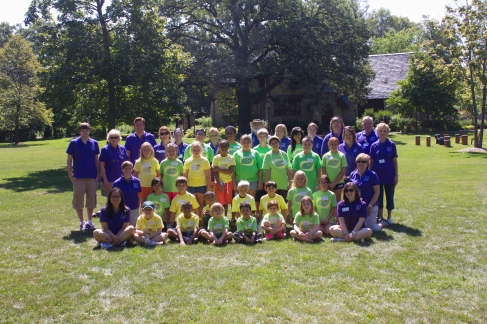Losing a loved one to a terminal illness reminds us of our mortality and enables grief. Adults turn to religious or spiritual sayings, Scripture, songs or words to aid in recovery from grief. Children, however, grieve differently as they move forward past new developmental milestones. They must learn how to adjust without having that loved one there.
In early August 2012, Seasons Hospice Foundation unveiled their first day camp for children struggling to deal with grief from loss of a loved one. Camp Kangaroo welcomed children ages 4 to 14 in Chicago, free of charge. Co-sponsored by FGMK, LLC and Seasons Hospice & Palliative Care, the camp hosted two dozen kids from all over Chicagoland as well as funded airfare and hotel stay for attendees and their guardians from out of town.
“We’ve created the program to provide a balance of constant activity and fun,” says Melody Stried, LCSW for Seasons Hospice & Palliative Care. “Every activity has an underlying bereavement piece without being heavyhanded or in their face.”
Russell Hilliard, PhD, LCSW, LCAT, MT-BC, CHRC, the Vice President of Supportive Care Services for Seasons Hospice & Palliative Care, explains further. “Camp Kangaroo is designed to give grieving children an opportunity to learn creative ways to cope with their loss, express their emotions and receive support from their peers and professional counselors. By using music therapy, the arts, professional storytelling and creative play, our campers have fun while working through the grief process.”
Seasons Hospice Foundation is working to expand Camp Kangaroo in 2013 and in years to come, establish the program in communities nationwide where Seasons Hospice & Palliative Care is located.




